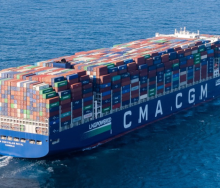The impact of vessel delays has been identified as the largest single element causing the severe capacity shortage, driving up freight rates in the market.
A recent study by Maritime Consultancy Sea-Intelligence provides a sobering assessment.
“Let’s say a carrier offers a six-week roundtrip service with six 10 000-TEU vessels, which are now five days late on the headhaul and two days late on the backhaul, so the round-trip to increases to seven weeks,” CEO Alan Murphy explains. “This requires an additional 10 000-TEU vessel to compensate for the delay-induced loss of capacity. To maintain the same weekly capacity, the carrier de-facto needs to increase nominal capacity by 16.7%, the effect of which is the same, as if market demand had increased by 16.7%.”
To start off, the study looked at the Transpacific capacity that the carriers had committed to the market and the additional capacity that carriers would have had to inject to deliver that actual capacity. “In percentage terms, since the start of 2021, carriers have had to deploy more than 20% more nominal capacity than usual, simply to offer the same weekly capacity,” says Murphy.

Figure 1 shows the development of actual cargo-carrying capacity, when compensated for the delay effect. “We can clearly see that irrespective of whether we measure y-o-y or compare it to 2019, the net capacity development is negative. This means that despite the factual injection of significantly more vessels into the Transpacific, the cargo-carrying capacity on a roundtrip-basis measured in TEU days has actually declined. We see a similar impact on Asia-Europe as well.”
And Murphy believes that building more vessels will not materially solve the problem – partly because vessels ordered today mainly get delivered in late 2023 and in 2024, and partly because injecting more vessels compounds the bottleneck problems in ports, effectively increasing the delay time. “The resolution has to come from solving the congestion problems on the landside. This does not only imply solving the congestion in the ports, but also the hinterland infrastructure related to trucks, chassis, rail, etc.”













